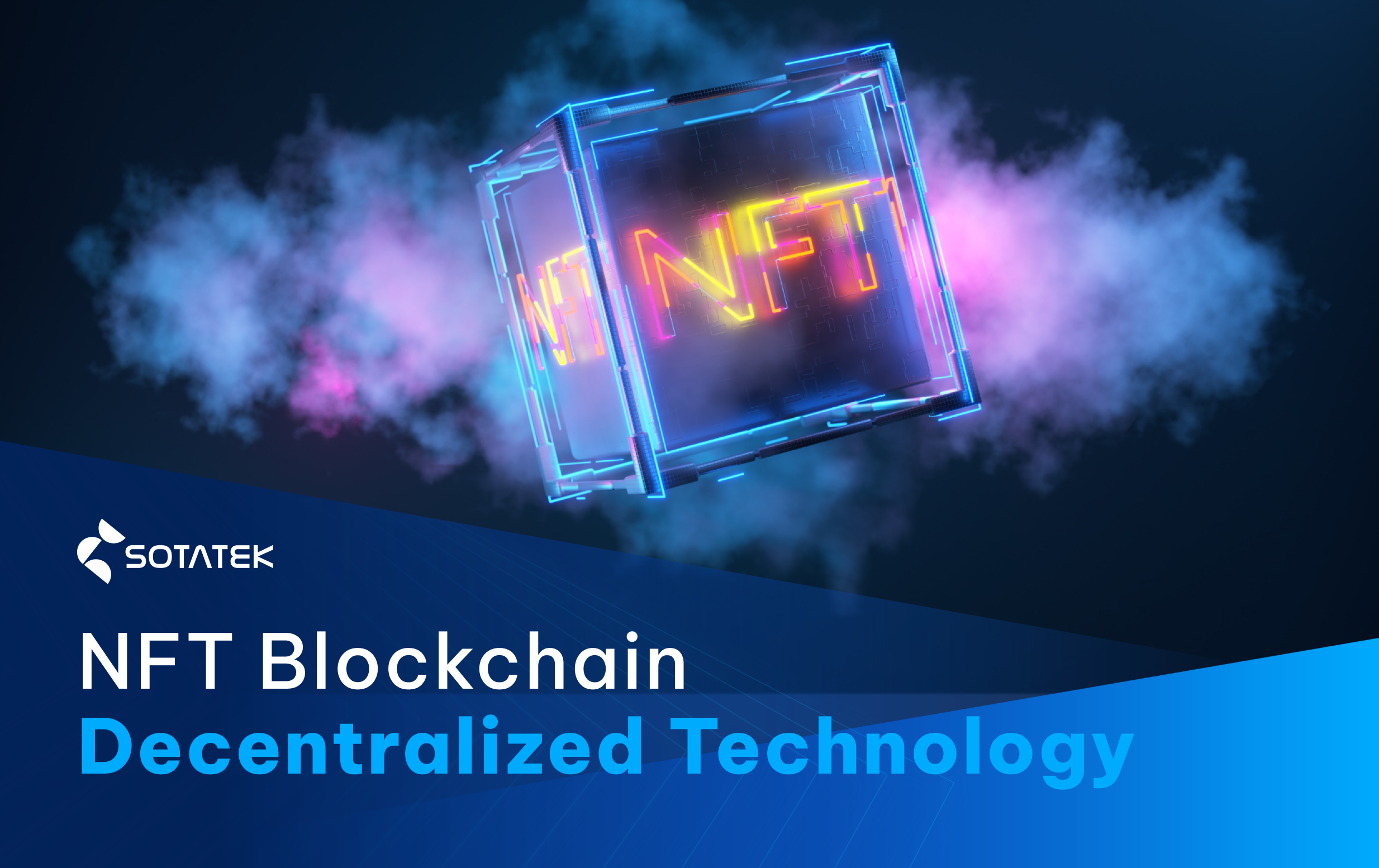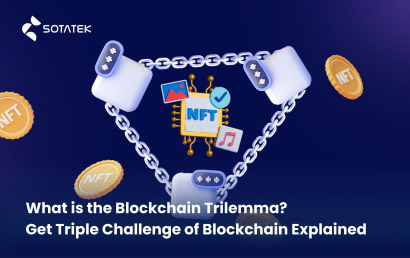In recent years, NFTs (non-fungible tokens) and decentralized technology have been attracting attention as innovative technologies that symbolize the evolution of the digital society. Especially since 2021, their potential continues to expand in various fields such as art, games, and entertainment. In this article, we will thoroughly explain the basics of NFT blockchain and decentralized technology, as well as their current usage, challenges, and future possibilities.
Fundamentals of NFTs and Decentralized Technology
1. What are NFTs?
NFTs (Non-Fungible Tokens) are unique digital assets built on blockchain technology, offering distinct characteristics that make them highly versatile. Each NFT has a unique identity, ensuring it cannot be exchanged like-for-like with other NFTs or assets, making them ideal for establishing ownership and authenticity for digital art, music, in-game items, and more. They also serve as digital proof of ownership, with a blockchain-based certificate that verifies and publicly records the asset's ownership. Furthermore, NFTs can be resold, often incorporating a royalty mechanism that enables creators to earn continuous revenue from secondary sales, providing a sustainable income model for artists and content creators.
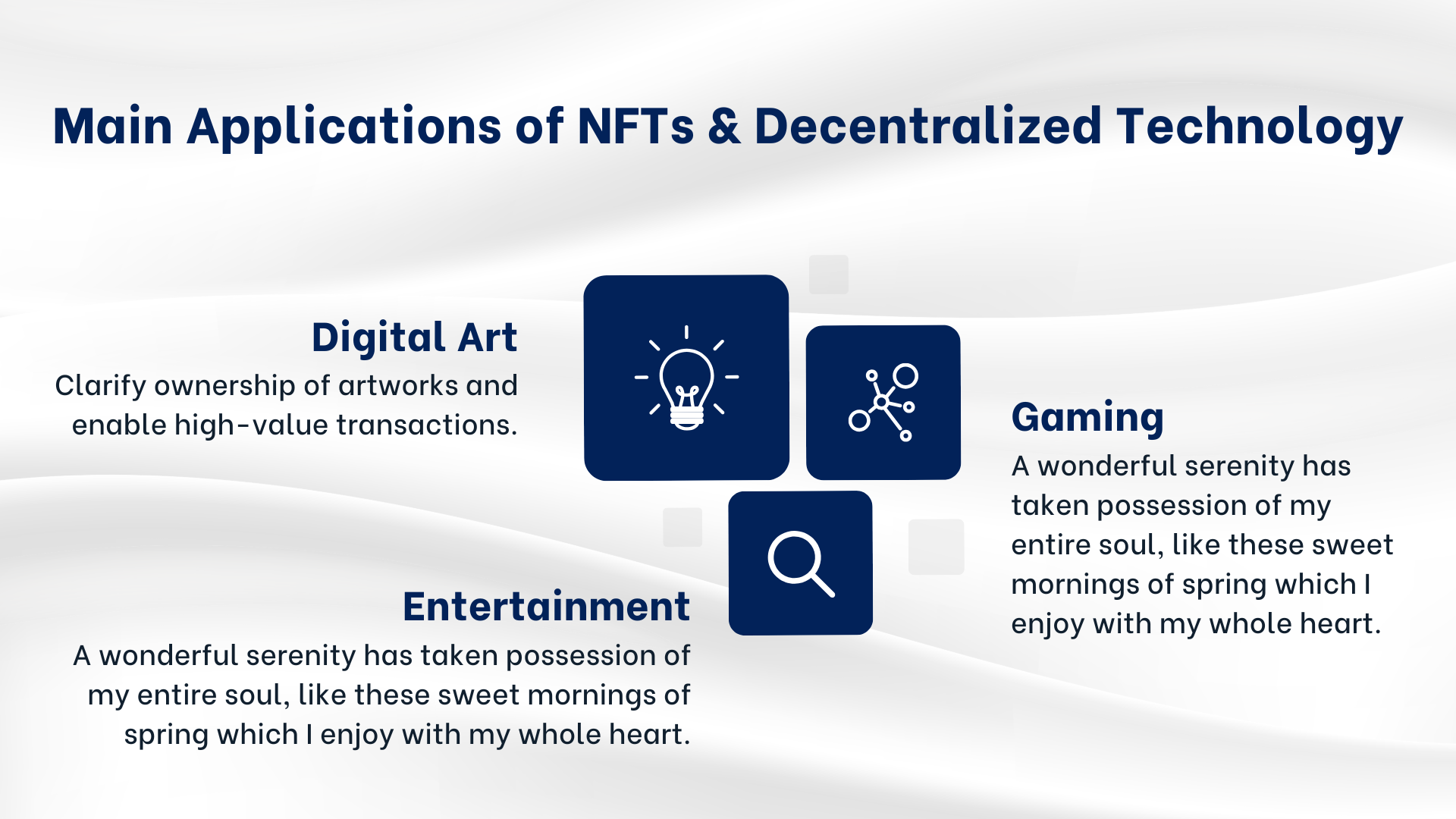
Main Applications of NFTs & Decentralized Technology
2. What is decentralized technology?
Decentralized technology refers to technology that does not require a centralized administrator and distributes and manages data and transactions among multiple nodes (network participants). A representative technology that realizes this is "blockchain."
Distributed data management: Information is stored in multiple nodes, so even if one server is attacked, the entire system will not stop.
Tamper-proof: With blockchain, data is extremely difficult to tamper with once it is recorded, which allows for highly reliable transactions.
Eliminating central intermediaries: Decentralized technology allows for direct peer-to-peer (P2P) transactions without the need for intermediaries such as banks or exchanges.
Distributed technology applications span various sectors, transforming traditional processes with enhanced efficiency and security. In finance, decentralized finance (DeFi) enables loans and asset management without the need for banks, revolutionizing accessibility and control. Within supply chain management, distributed systems enhance transparency in product distribution routes and help prevent fraud. In healthcare, they facilitate the secure sharing and management of patient data, ensuring privacy and trust in sensitive information handling.
3. Interrelationship between NFTs and decentralized technologies
NFTs and decentralized technology complement each other. NFTs are based on blockchain technology, which allows them to take advantage of its transparency and tamper-proofing. Decentralized technology allows NFTs to:
Transparency: All transaction history is recorded on the blockchain and available for anyone to view, making it easy to verify the provenance and ownership of NFTs.
More efficient transactions: A decentralized platform eliminates the need for intermediaries, allowing transactions to be completed quickly while reducing costs.
Promoting innovation: The combination of NFTs and decentralized technologies opens up new possibilities in many areas, including the creative industries and finance.
Evolution of NFTs and Market Changes
1. Origins of NFTs
The concept of NFT first appeared in 2014, but it has only become widely known since the market boomed in 2021. That year, a digital artwork by Beeple was sold for approximately $69 million, and projects such as CryptoPunks and Bored Ape Yacht Club also recorded high prices. This brought NFT into the spotlight.
2. Market growth and adjustment phase
There were periods in 2021 when monthly trading volume exceeded $6 billion. However, the market then rapidly cooled, with trading volume falling by 70% by mid-2022. This market correction was partly due to a large amount of short-term speculative trading.
Specific examples of NFT use
NFTs and decentralized technology are being applied to a variety of industries, expanding their potential. Below are some specific examples of their use cases.
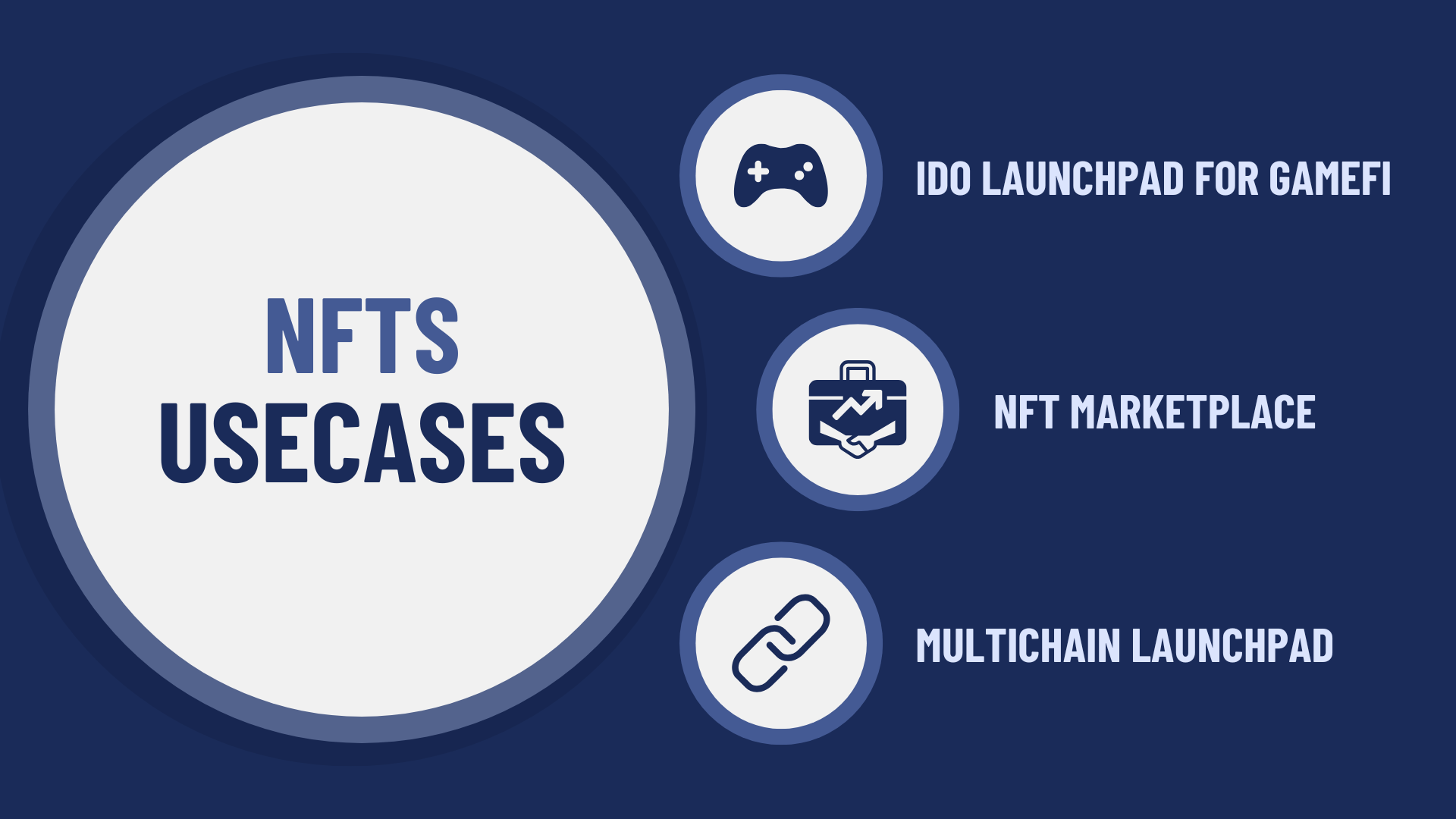
Examples of NFT uses
1. IDO Launchpad for GameFi
The platform supports multiple chains including BSC, ETH, Polygon, and Avalanche, providing a complete ecosystem to help grow NFT and gaming projects. With an easy-to-participate mechanism for players and investors, GameFi is creating new possibilities for the market.
2. NFT Marketplace
Built on the Binance Smart Chain, the NFT Marketplace is an easy and secure platform for trading digital art and collectibles. It supports BEP-20 USDT and BNB, catering to a wide range of NFT users.
3. Multichain Launchpad
It is not just an IDO launchpad, but a comprehensive platform that includes a variety of services such as NFT auctions, DEX (decentralized exchange), and bridge functions that enable token transfers. It is designed to provide quick and secure access to a variety of projects.
Related: Multichain Launchpad
Challenges of NFTs and Decentralized Technology
NFTs and decentralized technology have a lot of potential, but there are some challenges to their development. Solving these challenges is required to create a more sustainable and secure ecosystem. Below, we will explain the main challenges in detail.
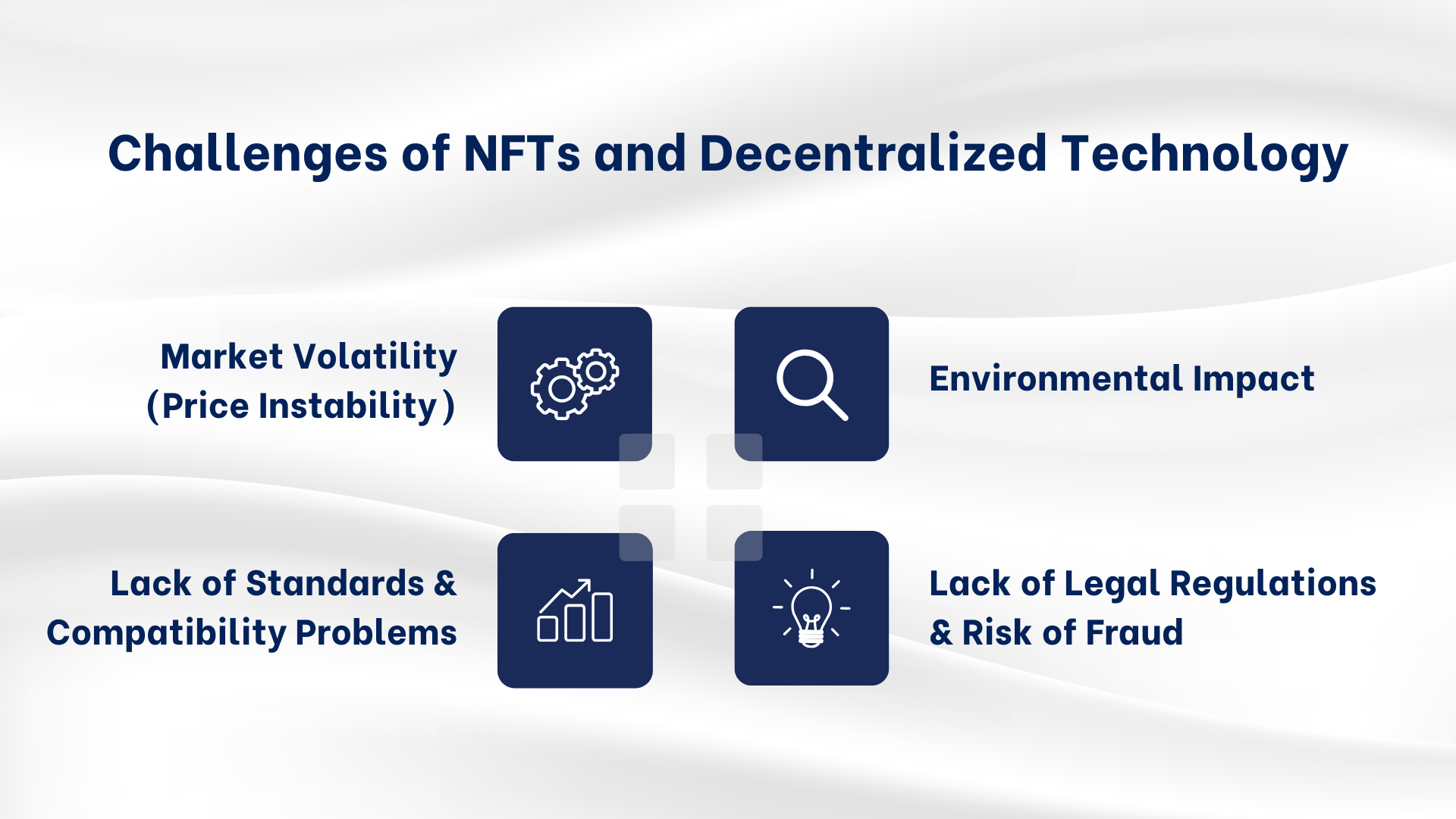
Challenges of NFTs and Decentralized Technology
1. Market volatility (price instability)
The NFT market is subject to high price fluctuations due to the high level of speculative trading. Prices often rise sharply when attention is focused on a particular project or collection, and then fall sharply. This volatility is what makes not only individual investors but also companies hesitant to enter the market.
Reason: NFT prices are highly dependent on supply and demand, as well as emotional factors and trends.
Direction of measures:
It is important to ensure that market participants correctly understand the risks through educational activities and information provision. In addition, there is a need to develop a new economic model aimed at stabilizing prices.
2. Lack of Standards and Compatibility Problems
Currently, there is no uniform standard among NFT projects and platforms, and lack of compatibility is a major issue, which means that NFTs purchased on one platform often cannot be used on other platforms.
Example: Ethereum-based NFTs and Solana-based NFTs cannot be traded on the same marketplace because they are not compatible.
Impact: This could lead to reduced convenience for users and businesses and increased market fragmentation.
Direction of measures:
Industry-wide standards (e.g. token standards like ERC-721 and ERC-1155) are needed, as well as efforts to leverage cross-chain technology to enable NFT transfer between different blockchains.
3. Environmental Impact
NFT transactions are conducted on the blockchain, and networks that use PoW (Proof of Work) consume large amounts of electricity. For example, it was said that a single NFT transaction on Ethereum consumes as much electricity as a family in a day (Ethereum will transition to PoS in 2022).
The magnitude of impact: NFTs have been subject to criticism due to their environmental impact, forcing companies and artists to make more sustainable choices.
Direction of measures:
There is an increasing shift towards more energy efficient technologies such as PoS (Proof of Stake) and L2 solutions. It is also important to introduce carbon offset programs and promote environmentally friendly NFT projects.
4. Lack of Legal Regulations and Risk of Fraud
The NFT market is facing a high incidence of fraud and misconduct, which has led to a decline in trust. Specifically, there are the following issues:
Fake NFT: When someone turns someone else's work into an NFT without permission and sells it.
Rug Pull: A fraud technique in which a developer suddenly abandons a project and runs off with the funds.
Security vulnerabilities: Wallets are vulnerable to hacking and phishing scams.
The lack of a legal framework limits the means by which victims can seek redress, and the nature of NFTs means that many transactions are international, complicating the issue with differences in regulations between countries.
Direction of measures:
It is necessary for national governments and international organizations to establish regulations. It is particularly important to take measures from the perspective of intellectual property rights protection and consumer protection.
It is also necessary to provide appropriate education to market participants and inform them of safe trading methods and measures to address fraud risks.
NFTs and decentralized technologies will play an important role in shaping the future of the digital society, but to realize their full potential, we must face these challenges: market volatility, lack of standards, environmental concerns, and underdeveloped laws and regulations. We hope that by promoting technological development and industry-wide cooperation, we can create a safe and sustainable ecosystem.
The Future of NFTs and Decentralized Technology
NFTs (Non-Fungible Tokens) and decentralized technology are evolving rapidly and are expected to be used in a variety of innovative ways in the future. In particular, NFTs are expected to play an important role in areas such as business, education, the metaverse, and regulation. Below, we will take a closer look at the future potential of NFTs.
1. Use in the business field
NFTs have the potential to revolutionize traditional business models and create new value. In particular, they will play an important role for companies as a new means to improve customer experience. Below are some specific examples of how NFTs will be used in the business field.
Event ticket NFT
By issuing event tickets as NFTs, a system can be created that allows artists and organizers to earn revenue even when tickets are resold. This will solve the problem of ticket resales and promote transactions at fair prices. In addition, NFT tickets will have built-in security features to prevent counterfeiting and unauthorized resale, which is expected to help reduce fraud in ticket sales.
A brand new experience
Brand experiences using NFTs are on the rise. By issuing NFTs, companies can provide unique benefits to their customers. For example, by granting NFTs to purchasers of specific products, they can provide access to limited content or discounts on product purchases, deepening relationships with customers. NFTs are a very effective way to increase customer loyalty and strengthen brand value.
Monetizing art and music
For artists and the music industry, NFTs also offer new ways to monetize. By selling artworks and music content as NFTs, artists can decentralize ownership of their work and earn direct revenue. They also introduce a mechanism for artists to receive royalties when their artwork or music is resold, providing artists with a stable income over the long term.
2. Education and Certification
The digitization of degrees and credentials using NFTs has the potential to spur innovation in the education sector, which is expected to significantly improve the transparency and reliability of degrees and credentials.
Digitization of degree certificates
Traditionally, degree certificates were issued as physical documents, which could be time-consuming to manage and verify. By utilizing NFT, degree certificates can be digitized and managed on the blockchain. This prevents certificate tampering and counterfeiting and makes it easy for anyone to verify the authenticity of the certificate. In addition, degree certificates can be resold and transferred, allowing graduates to flexibly use their qualifications in other places.
Standardization of Certification
NFTs are also expected to contribute to the standardization of qualification certificates. For example, by issuing digital certificates for professional or technical qualifications as NFTs, it is possible to automatically prove that one holds the qualification, which will be useful when job hunting or advancing in one's career. By adopting an authentication system using blockchain technology, it is guaranteed that the qualification is legitimate, providing highly reliable proof of qualification.
3. Integration with the Metaverse
The metaverse is a virtual space in the digital world that is a perfect fit for NFTs, which play a key role in proving ownership of digital items and real estate within the metaverse.
Ownership of Digital Items and Real Estate
Ownership of items and real estate used within the metaverse will generally be proven through NFTs. This will allow users to transfer ownership or sell in real-time within the virtual space. Items such as digital art, costumes, and land will be traded as NFTs, allowing owners to share their value with other users. With the introduction of NFTs, transactions within the metaverse will be trustworthy and transparent.
Formation of a new economic zone
The integration of the NFT blockchain with the metaverse has the potential to create a new economic sphere. As asset management and transactions in the virtual space evolve, economic activity in the metaverse will become more similar to the real-world economy. If it becomes common for companies to sell products and hold virtual events in the metaverse, a new market will emerge, and NFTs are expected to play an important role as the underlying technology.
4. Regulation and Standardization Developments
While the NFT market is developing rapidly, the lack of regulation and standardization remains an issue. It is expected that as regulation and technology standardization progresses, more people will be able to use NFTs safely.
Regulatory Development
Due to its newness, the NFT market is at high risk of fraud and abuse. To prevent this, governments and regulatory agencies need to establish a legal framework for NFTs and protect consumers. With proper regulations in place, companies and investors will be able to enter the NFT market with confidence, which is expected to lead to further growth.
The Importance of Standardization
The standardization of NFTs will improve interoperability across various platforms. Currently, there are many different NFT formats and platforms, and without standardization, the market is at risk of fragmentation. The development of common standards and technical standards is expected to lead to the adoption of NFTs in more industries and accelerate their spread.
Conclusion
NFTs represent a groundbreaking shift in how we perceive and interact with digital assets. By combining blockchain technology with features like uniqueness, transparent ownership, and built-in royalty mechanisms, NFTs empower creators while offering unparalleled value to collectors. As this technology continues to evolve, its potential applications across industries such as art, entertainment, and gaming promise to redefine traditional systems, creating a more inclusive and innovative digital economy.
